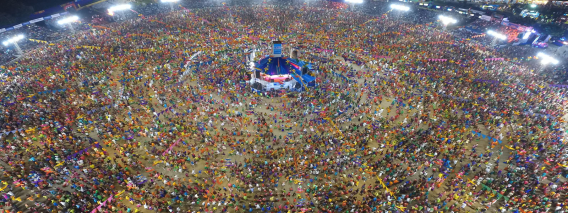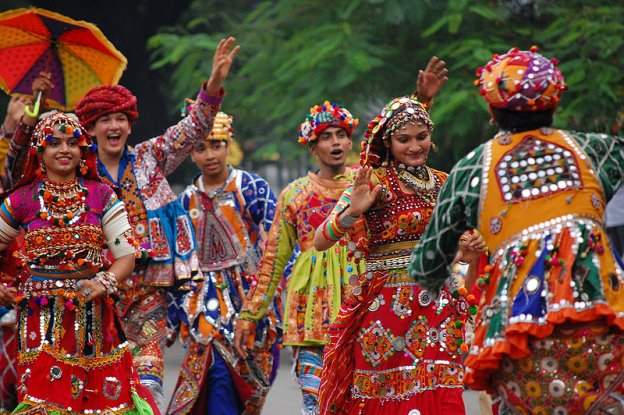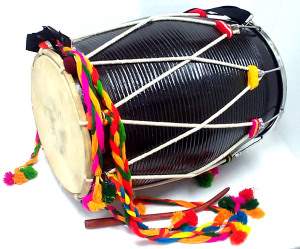Dance as Part of a Religious Ceremony
| ✅ Paper Type: Free Essay | ✅ Subject: Cultural Studies |
| ✅ Wordcount: 980 words | ✅ Published: 23 Sep 2019 |
Dance as Part of a Religious Ceremony
Garba is a religious dance that is performed in the Indian culture. While Garba can be performed during joyous occasions including weddings, it is most commonly celebrated during Navratri, a nine day festival that honors and celebrates Goddess Durga. The religious dance is often performed after reciting prayers at the temple or mandir. The principle movement includes circling around a statue or a picture of Goddess Durga, in most cases. Often times, there are concentric circles due to limited space (“Garba”). This is simply the fundamentals of Garba. Unique elements are added such as clapping, twirling, and stepping back and forth with the net movement being forward. The Garba dance is performed in a circle as it represents time, the cycle of birth and death. The dance encircles Goddess Durga as she embodies the divinity of the female, the one responsible giving life. Sometimes Garba encircles a lit lamp known as a garbha deep which translates to “womb lamp.” It emphasizes the fetus in the womb of a female, once again representing life (“Garba: The”). 
Patel, Heenal, Kapadia, Payal. “Aerial View of United Way of Baroda garba (considered one of the largest garba events in the world).” 28 June 2018. Online Image. Lincolncenter.org. 19 Feb 2019.
The costumes for Garba are extremely colorful and vibrant. Women often wear chaniya choli, which is a three-piece outfit including: a chaniya which is a long skirt similar to the white skirts of the Whirling Dervishes, a blouse, and a choli or dupatta which is a similar to a scarf. Women may also accessorize with bangles and other jewelry. The men wear a Kediyu which is comprised of a short, yet flared top with pants. They may also wear a turban known as a pagadi. Both outfits have intricate and colorful embroidery. There is no symbolism behind this costume. The outfit is worn because of the visual appeal of the flared outfits when dancing in a circle (“Garba: The”).

“Garba Dance (Image: Mera events).” Online Image. Utsavpedia.com. 19 Feb 2019.
Both the dance and the outfits can be clearly seen in this video that illustrates the traditional Garba dance encircling Goddess Durga:
Traditional Garba-Raas at Gujarat Kharva Samaj Porbandar. 28 June 2017. Youtube. Web. 19 February 2019. https://www.youtube.com/watch?v=_85fuwfxi58.
Garba is a very energetic dance. The instruments that often used are dhol, a dholak, cymbals, and shennai. Modern additions include the synthesizer and the harmonium. The dhol and dholak are double sided drums and the shennai is a wind instrument with a double reed (“Garba”). In addition, if you consider the voice to be a musical instrument, there are also singers that sing Navrati songs. From my personal experience, I find the music that accompanies Garba almost takes over you. Personally, I found that the speakers in most of the halls are very loud, thus when the musician plays the dhol and dholak, I can almost feel my heart beating to the sound of the percussion. Overall, the music is very energetic and joyous. You always get this overwhelming feeling to join the dance.

Shah, Aksha. “Other Percussion Instruments for dance accompanying music in India.” 20 July 2011. Online Image. NrityaDhol.com. 19 Feb 2019.
When the Cem and Semah are juxtaposed with the preceding prayers and Garba in the Indian culture, there are many similarities and differences. Primarily, Garba can be performed anywhere similar to the Semah as “The importance is the intention… any space can be converted into a worship place” (“Cem Rituals of Alveli”). In fact, in my community, we usually hold Navrati festivals in our local high schools and the piece of land behind our temple (mandir). However, unlike the Cem where the location is not important, the prayers that honor Goddess Durga, also known as an aarti, are held in a mandir. In addition, the aarti is neither interactive nor do they function in solving dispute like the Cem. The prayers are similar to that of the Sunni Muslims, “alone with God himself…” and we face the statues of our Gods, similar to how the Sunni Muslims face the mihrab. Although, we often do use instruments such as the tabla and the harmonium during our aarti similar to how the Cem uses the baglama saz. In addition, the Semah and the Garba are similar in that they both form circles. However, the circles represent different meanings: in the Semah the circle means unity with God, whereas in the Garba the circle represents time. Also, the Semah dance consists of three parts, whereas that is not the case for Garba. Anyway, they both entail turning and emphasis on hand and feet movement. Both men and women are allowed to participate in the Garba and Semah. However, unlike the Semah which can only include 2-16 dancers, Garba can include an infinite number of dancers. Whoever wishes to participate can do so in Garba, unlike the Cem in which those who are excommunicated cannot unless forgiven. Personally, I think the Semah is more strict than the Garba. While there is no talent and dress code required similar to Garba, there are certain rules such as not turning your back to the çeregthati and how if one is tired he or she may invite someone else of that gender. There is no such rule for Garba. Overall, the juxtaposition of both religious rituals does show interesting similarities and differences.
Works Cited
Cite This Work
To export a reference to this article please select a referencing stye below:
Related Services
View allDMCA / Removal Request
If you are the original writer of this essay and no longer wish to have your work published on UKEssays.com then please click the following link to email our support team:
Request essay removalRelated Services
Our academic writing and marking services can help you!

Freelance Writing Jobs
Looking for a flexible role?
Do you have a 2:1 degree or higher?
Study Resources
Free resources to assist you with your university studies!


